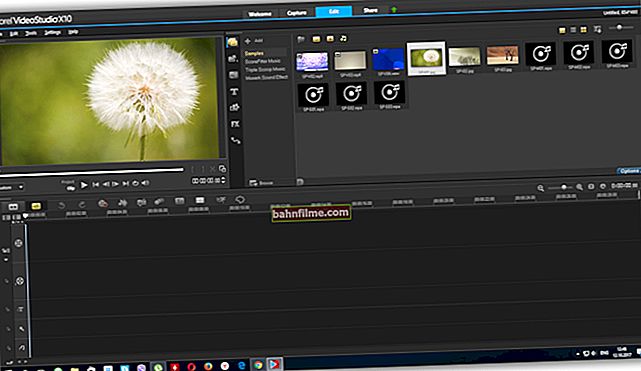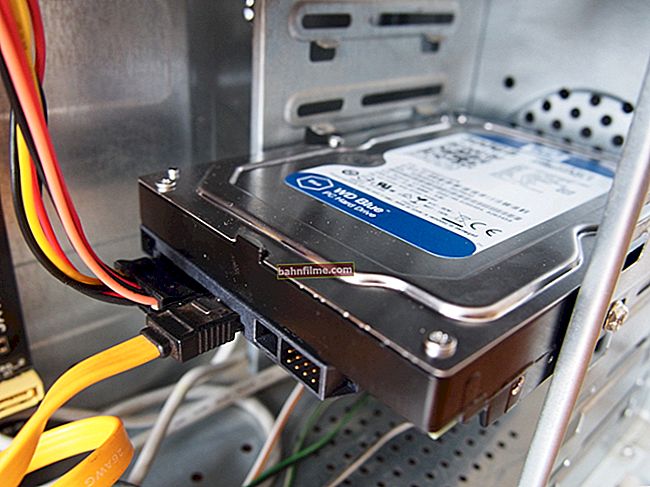 Good day!
Good day!
PDF files seem to be good for everyone, but they have one cornerstone ... The fact is that the size of some PDF-focks is far from "ideal", often when they weigh even 100 ÷ 500 MB, sometimes it reaches 1 GB! 😢
Moreover, this file size is not always justified: i.e. it doesn't have some very high-precision graphics that take up so much space.
Of course, when you are dealing with such a size, it becomes difficult to transfer it to other PCs, tablets, phones. (for example, the phone may simply not have enough memory for a dozen of these files!) .
In such cases, you can "slightly" reduce the size of the PDF by using it compression ... Compression, by the way, can be done in different ways.
Actually, this is what today's article will be about ...
*
👉 By the way!
If you remove some pages from a PDF document, then you can reduce its size due to this. If this option suits you, then I recommend this note.
*
Options on how to compress a PDF file
Method number 1: archiving
Perhaps the simplest and most obvious is to add PDFs to the archive. Thus, sometimes, it is possible to significantly reduce the size they occupy.
In addition, one archive file is much faster and more convenient to copy from one PC to another. (rather than a dozen or even a hundred PDF-foci) .
👉 Supplement!
The best free archivers for Windows - my gold pick
*
To send a file to the archive - just 1-2 mouse clicks are enough.
For example, in such a popular archiver as 7-Zip (you can also find it in the link above) : just right-click on the file and select "Add to archive ..." ... See screenshot below. 👇

Add to archive (7Z)
Next, specify the archive format, compression ratio and click "OK" (this is the minimum).

Selecting the format and compression rate
Actually, my file was compressed almost 3 times! See example below. 👇

Before compression, and after compression - pay attention to the size
Advantages of the method:
- after unpacking the archive, the PDF file does not lose its quality;
- ZIP archive formats can be opened by most modern readers;
- one archive file (within which there are hundreds of PDFs) is copied much faster than doing it with the same files without adding them to the archive.
Disadvantages of the method:
- to open a file, you need to extract it from the archive (and not on all PCs / phones / tablets the required archiver can be installed);
- not all files lend themselves equally well to compression: one can be compressed very decently, the other by 0.5% ...
- when choosing some archive formats - it may take a considerable amount of time to compress the files.
*
Method number 2: compression using quality reduction (DPI)
DPI Is the number of dots per inch. The more dots per inch, the higher the quality of the displayed image (and the more the file weighs).
Naturally, when re-saving a PDF file, you can specify a new number of dots per inch (DPI) and thereby reduce the file size (along with its quality).
However, I would like to point out right away that not always with decreasing DPI, the quality of the picture deteriorates (in many cases, you won't notice the difference by eye!).
You can do a similar procedure in many programs : Adobe Acrobat (not to be confused with Adobe Reader), Fine Reader, Cute PDF Writer, Libre Office, etc. Below I will give a couple of free examples ...
*
1) Libre Office (👉 link to the program)
Nice and free office suite (I previously recommended it as an alternative to MS Office). In its arsenal has a program DRAW, which can easily and easily make changes to PDF (including DPI change). Let's take a closer look ...
To start DRAW - start Libre Office, and select from the menu "Drawing DRAW" .

Drawing DRAW
Next, open any PDF file in the program and then click on "File / Export to PDF ..." .

Export to PDF
A window will open with many options for saving. Here you can change the compression quality, resolution (DPI) and other parameters. In general, I have highlighted the most necessary in the screenshot below.
After setting the parameters - click the export button to create a new file.

PDF options
Fast, simple and easy! Is not it?
*
2) CutePDF Writer (👉 link to the office. Site)
This free program, after installation, "creates" a separate special line when printing a document (with the necessary properties for compression) ...
Those. install it, then open some PDF file, say, in Adobe Reader (you can also use any other PDF reader) and click "Print" (shortcut Ctrl + P).
Then choose the line " CutePDF Writer ", and open it "Properties" .

CutePDF Writer Properties
Then you need to open the print quality tab and go to "Additionally" .

Paper properties and quality
Here you can set the print quality in DPI (and other parameters).

Print quality
Next, save the changes you have made and "print" (that is, save) our file. PDF quality will be new: compare old and new files!
NOTE.
By the way, you need to install both files that are available on the official website of the program!

You need to install both files
Advantages of the method:
- we do not lose compatibility (the file remains the same PDF);
- the operation is pretty fast;
- the DPI change operation can be performed in dozens of different programs.
Cons of the method:
- in some cases, the quality drops dramatically (for example, if you are dealing with schemes and high-quality portfolios - most likely this option will not work).
*
Method number 3: converting to DjVU format
Format DjVU, on average, provides stronger compression than PDF. And I must admit that DjVU is one of the few formats that really competes with it.
To convert from PDF to DjVU, in my opinion, it is most preferable to use one small utility - PdfToDjvuGUI .
*
PdfToDjvuGUI
Officer. website: //www.trustfm.net/
Note: please note that the utility sometimes incorrectly reads the "names" of files written in Russian.

PDF to DjVU - small utility
It is very simple to use it: just add the desired file (Add PDF), set the settings (you can leave nothing) and press the button "Generate DjVU" ... A "black" window should appear for a while, after which the program will inform you that the file has been re-converted.
By the way, the program will place the DjVU file in the same folder where the original PDF was located. See the screenshot below for an example. Without changing the quality (and the program allows you to change DPI), we managed to reduce the file space occupied by almost 2 times!

PDF VS DjVU (at the same DPI)
PS
Below are a few more online services that can perform a similar conversion operation.
Advantages of the method:
- maximum file compression (i.e. saving disk space!);
- the file can be immediately opened in the reader, just like you do with PDF (i.e. it is not an archive).
Disadvantages of the method:
- large files require significant conversion time;
- during conversion, quality may be "lost" (therefore, check important graphs manually, how they were compressed);
- DjVU format supports fewer programs than PDF.
*
Method number 4: using online tools
👉 Service 1: //smallpdf.com/ru/compress-pdf

Compressed file to Small PDF
An excellent site for fast compression and conversion from one format to another. Files up to 20-30 MB in size are processed literally within 10-15 seconds!
The service does not touch the markup of the document, links, menus, and other elements. Compression takes place at the expense of graphics (that is, the PDI parameter).
*
👉 Service 2: //convertio.co/ru/pdf-djvu/
Another universal service for quickly converting PDF to DjVU, or for compressing PDF without changing the format. The result can not only be downloaded to your PC, but also immediately sent to a cloud drive: Google Drive, Dropbox ...

Convertio - service work screen
*
👉 Service 3: //www.ilovepdf.com/ru/compress_pdf
There are 3 compression levels available on the service: minimal, normal and extreme. It works very quickly, processes files up to 3-040 MB in 5-10 seconds. (at least that was the case with my ten test files) .

The files were compressed // Service "I love DPF"
I also note that on this service you can split a PDF file into several parts, convert it to other formats, combine several PDFs, etc. In general, this is a rather multifunctional service, I recommend it!
Advantages:
- it is unnecessary to install any programs on your computer;
- services can be used even from mobile devices;
- as a rule, compression of small files on services is faster.
Disadvantages:
- confidentiality (I think not everyone decides to send some of their documents to an unfamiliar service);
- the need to upload / download files to the service (if the Internet is not very fast and there are a lot of files, this will turn into a "head" pain).
*
Additions on the topic are welcome ...
Good luck!
👋
First published: 04.06.2018
Correction: 11/15/2020









